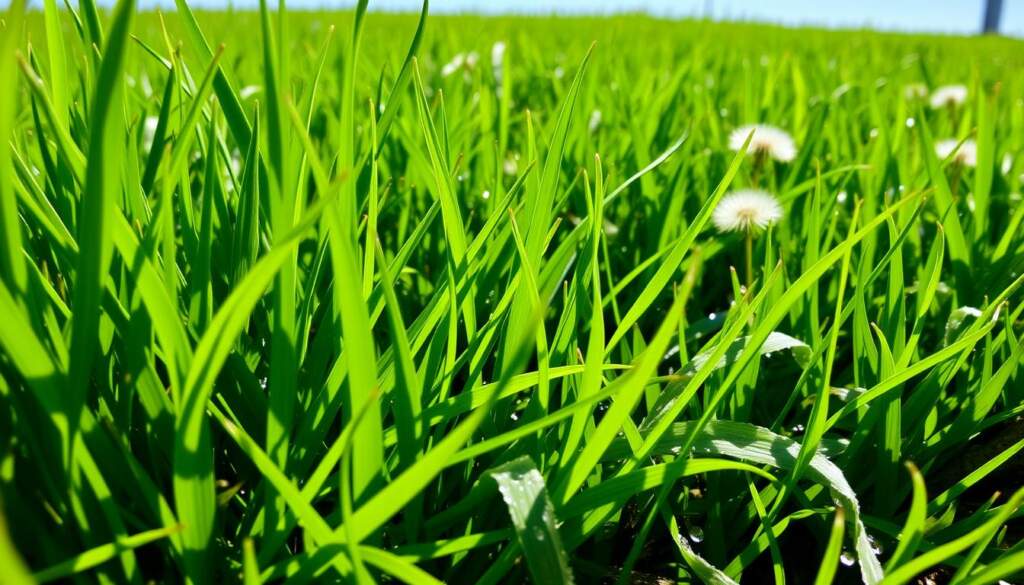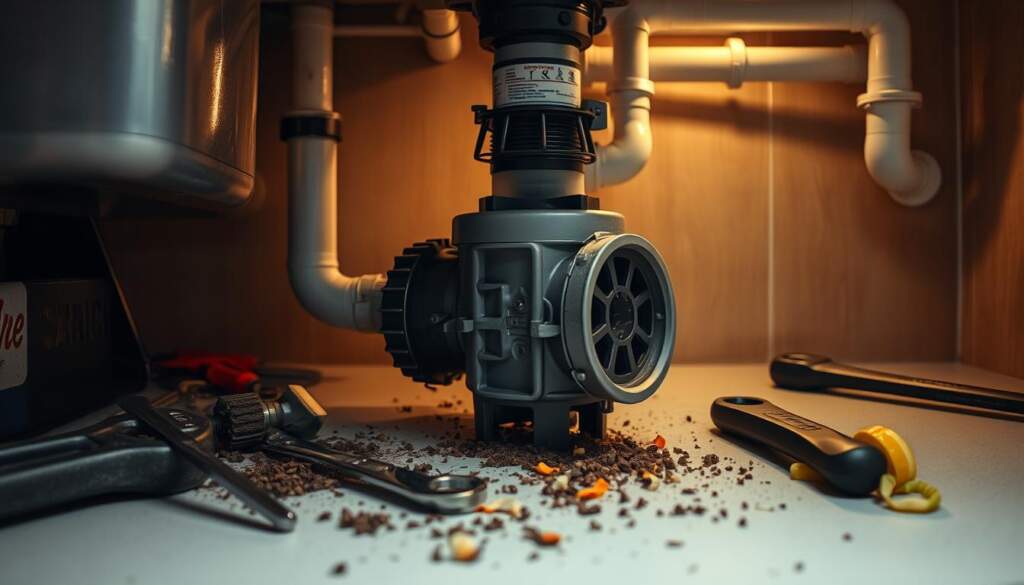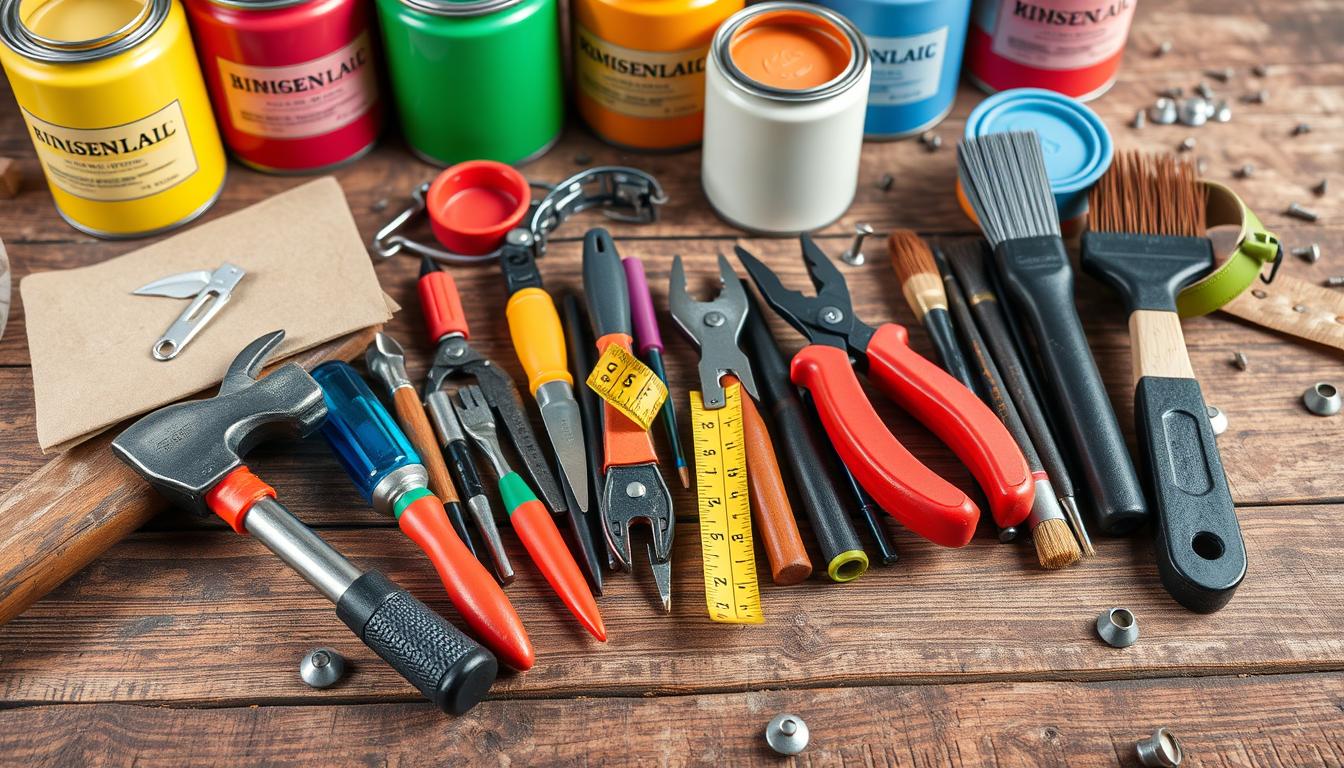Every homeowner knows that keeping up with home maintenance can be both rewarding and cost-effective. Whether it’s the satisfaction of applying a fresh coat of paint or the practicality of fixing a leaky faucet, simple DIY projects not only empower you but also save on the costs that come with professional services1. With a set of basic tools, including screwdrivers, a hammer, pliers, a multi-purpose saw, and an adjustable spanner2, you can tackle many common household repairs yourself. However, remember that for tasks that pose a risk or require specialized knowledge, such as electrical work or major plumbing, the expertise of a professional is invaluable and recommended.
Some DIY home improvement tasks make a significant impact on the comfort and functionality of your home. Unclogging a dishwasher not only restores its efficiency but also prevents the accrual of odors2. Meanwhile, free up those stuck windows or swollen doors by sanding down the problem areas, resulting in less frustration and potential damage2. And when it comes to your lawn, with the right lawn care and maintenance tips, you can nurture a lush, patch-free outdoor space that enhances the aesthetics of your home1.
Whether you’re dealing with wobbly furniture or combatting the musty smell in your washing machine, this article will guide you through the process with practical advice and ingenious hacks. Regularly maintaining and addressing issues with your property not only ensures a more comfortable living environment but can also maintain or even increase your home’s value over time2.
Key Takeaways
- DIY home improvement initiatives can significantly reduce costs and provide personal satisfaction1.
- A basic toolkit is essential for tackling many household repairs, furthering your ability to maintain your home effectively2.
- There are a variety of simple DIY projects that can alleviate common issues, from appliance maintenance to door adjustments12.
- Proper and timely maintenance can prevent damage escalation and preserve the value of your home2.
- Particular home repair tasks may require professional expertise to ensure safety and effectiveness.
- By utilizing cost-effective solutions and handy home maintenance tips, homeowners can cultivate a more pleasant home environment.
Refinish Hardwood Floors with Less Fuss
Refinishing hardwood floors is not just a way to revitalize an old surface; it’s a feasible DIY project that transforms the aesthetics of your home without the overwhelm. Whether you are tackling this project in one room or throughout your home, understanding when to sand and when to buff, as well as knowing where to find the right tools, can make all the difference.
When to Sand and When to Buff
Deciding between sanding floors and buffing floors comes down to the condition of your hardwood floors. If your floors display signs of deep scratches, dents, or warping, sanding is your best option; this involves removing the top layer of the wood to create a smooth, fresh surface. Conversely, if your floors simply look dull or have minor imperfections, buffing might suffice to restore their shine. It’s critical to address common hardwood flooring problems adequately by choosing the appropriate approach for effective DIY floor renovation3.
Renting the Right Equipment for the Job
Rental equipment for DIY features a variety of tools adapted to different stages of floor refinishing. Home improvement stores commonly offer equipment rental for periods ranging from 4 to 48 hours, allowing ample time to tackle areas ranging from a single room to an entire floor. For full-scale refinishing, renting a heavy floor sander, along with a hand sander and shop vac, becomes necessary3. For smaller areas or a quick recoat, a buffer can be rented to apply a fresh top coat of polyurethane, effectively enhancing the floor’s durability and sheen. This strategic use of rental equipment for DIY ensures cost-effectiveness and directly influences the success of your project3.
When planning the duration of your refinishing project, consider the size of the area and the type of floors. While DIY refinishing engineered hardwood floors may take less than 2 days for a few rooms, larger areas with site-finished hardwood might require up to 5 days of work, with additional time before heavy furniture can be reintroduced4. Furthermore, think about overage; it is often suggested to purchase approximately 20% more material than measured to ensure you have enough supplies to account for any waste or errors during the installation process4.
In conclusion, mastering the technique of either sanding or buffing, and choosing the right tools for hire, are pivotal in achieving a flawless finish while refurbishing hardwood floors by yourself. With proper planning and the right knowledge, your flooring renovation can be both satisfying and cost-effective.
The Secrets to a Lush, Patch-Free Lawn
Everyone dreams of having a vibrant, green lawn, but achieving that lush growth requires some insight and effort into lawn repair and maintenance. Let’s unravel the secrets of DIY lawn maintenance and explore cost-effective, chemical-free lawn care solutions that guarantee a full, green grass growth without the need for professional intervention.
Firstly, understanding the constituents of an effective homemade lawn tonic is crucial. A well-kept secret among DIY enthusiasts involves a concoction provided by Tim Heffron, a former groundskeeper, which includes one full can of regular pop, one full can of beer, 1/2 cup each of liquid dish soap (non-antibacterial), household ammonia, and mouthwash. This blend leverages the cleaning and growth-promoting qualities of the ingredients while ensuring the soap and mouthwash protect against pests and diseases without harming essential soil microbes5.
Applying this mixture every three weeks during high heat not only keeps your lawn hydrated but also ensures it remains lush and soothingly green5. Make sure you utilize this mixture with a 10-gallon hose-end sprayer for even distribution, especially favorable during watering restrictions5.
In addition to homemade remedies, selecting the right products tailored to your region’s specific needs can dramatically enhance patchy lawn solutions. For instance, Scotts Lawn Care Program provides personalized recommendations based on simple questions about your local environment. In the northern areas, Scotts Turf Builder Triple Action is recommended in the spring to feed the lawn while eliminating common weeds6. Conversely, in southern zones, Scotts Turf Builder Southern Triple Action offers protection against fire ants and drought conditions6.
Suitable equipment also plays a pivotal role in spreading these products efficiently over your lawn, showing options ranging from the Scotts Whirl Hand-Powered Spreader, suitable for small yards, to the Scotts Elite Spreader designed for much larger lawns up to 20,000 square feet6.
For daily care tips, maintaining a higher cut during hotter months to foster deep root growth is advised. This, coupled with the sharp mower blades, helps in achieving a clean cut that promotes healthy green grass growth6.
| Season | Care Tip | Scotts Product Recommendation |
|---|---|---|
| Spring | Weed Prevention and Lawn Feeding | Scotts Turf Builder Triple Action6 |
| Summer | Deep Watering & Protection Against Grubs | Scotts GrubEx & Scotts Turf Builder Summerguard6 |
| Fall | Lawn Feeding for Root Development | Scotts Turf Builder WinterGuard Fall Lawn Food6 |
| Winter | Limit Lawn Traffic & Safeguard Against Icing | Ice melt products safe for lawns6 |


The balancing act of maintaining a breathtaking lawn can be simplified with these patchy lawn solutions. The combination of a DIY approach alongside targeted, proven products can turn the dream of year-round green grass into a reality. Remember, the essence of DIY lawn maintenance lies not just in routine care but also in understanding the specific needs of your lawn and addressing them with tailor-made solutions.
Solving Garbage Disposal Woes Yourself
Embarking on a DIY disposal cleaning or garbage disposal repair can seem daunting, yet understanding the groundwork can simplify the process immensely. Knowing when to tackle home appliance maintenance like garbage disposal issues can not only save costs but also extend the lifecycle of the appliance.
Initial steps often include basic troubleshooting such as checking the power source and pressing the reset button, which can resolve minor issues efficiently78. Regular maintenance, such as running the disposal regularly and using cold water for flushing, significantly aids in preventing common problems8. Moreover, a basic cleaning routine using safe, non-chemical agents like dish soap or a mix of baking soda and vinegar every two to three weeks can keep odors at bay and prevent build-ups9.
When tackling more complex issues like leaks or disposal jams, the right set of tools—such as hex keys or garbage disposal wrenches—may be required. Fortunately, these tools are readily available at local home improvement stores like The Home Depot8. For leaks, it’s crucial to identify the source, which can be either at the sink flange, discharge hose, or mounting flange, and ensure that your interventions don’t further stress these components7.
Eliminating disposal odors and ensuring the smooth operation of your disposal involves avoiding the introduction of harmful materials. Fats, oils, and fibrous food scraps can severely hamper the functionality and lifecycle of your disposal8. Ice can be a beneficial tool not only for cleaning but also for helping to sharpen the disposal blades, maintaining its efficiency8.


Beyond maintenance, awareness of the appliance’s typical lifecycle can guide decisions on whether to repair or replace. Disposals are normally recommended to be replaced between 5 to 10 years due to wear and tear7. However, with diligent care and avoidance of problematic materials, this timeline can be extended9.
| Issue | DIY Solution | Professional Intervention Needed |
|---|---|---|
| Jams | Use hex wrench to manually rotate impeller blades8 | If manual rotation doesn’t resolve the issue8 |
| Odors | Cleaning with baking soda and vinegar every 2-3 weeks9 | Persistent smells not resolvable by cleaning8 |
| Electrical Issues | Reset power source and button8 | Complex wiring or power issues8 |
| Leaks | Identify and seal the source of the leak78 | Seal replacement or significant redo of connection points7 |
Conclusively, while certain scenarios demand professional expertise, many aspects of garbage disposal repair and DIY disposal cleaning can efficiently be managed at home with the right knowledge and tools8. This approach not only nurtures a deeper understanding of your home appliances but also cultivates a sense of achievement in maintaining your household’s smooth operation.
Banishing Dishwasher Odors for Good
Keeping your kitchen’s sidekick in tip-top shape doesn’t just involve dealing with the aftermath of last night’s spaghetti affair. Dishwasher maintenance is crucial for a number of reasons, not the least of which is avoiding the unfriendly welcome of an unsavory odor coming from your appliance. If you’re detecting less-than-pleasant scents, you’re not alone—dishwashers occasionally harbor unpleasant odors, a consequence of food particles and grease that may elude a normal rinse cycle10. But fear not, DIY odor removal might just be simpler and more effective than you’d expect, with common household items you likely have in your pantry right now.
Cleaning dishwasher filters regularly is the first defense against these unwelcome smells. In truth, a clogged or unclean filter stands as one of the primary villainous causes behind a smelly dishwasher11. Home appliance care tips often preach the virtues of vinegar and baking soda, and rightly so. These natural cleaning agents are not only effective in warfare against odors but also safe for your dishwasher’s delicate ecosystem—cutting through greasy film and mineral deposits without a hitch1110. Add to that the cleaning potency of lemons, and you’ve got a trifecta of odor-slaying might11. Maintenance frequency is crucial too; cleaning the filter once a month and checking spray arms and door lip every couple of months can ensure a fresh-smelling machine10.
Lastly, embracing some proactive steps could save you the headache of unexpected repairs. A gentle nudge, leaving the dishwasher door slightly ajar between uses, can prevent the growth of mildew and mold—regular, unsuspecting guests that thrive in sealed, damp environments11. Professional maintenance isn’t just a cautionary elective—it’s recommended to bestow your dishwasher with a long and efficient life. So, remember, a little routine cleaning, coupled with the appropriate loading techniques and detergents, not only preserves the fresh aroma of your dishes but also prolongs your dishwasher’s time in your service11.
FAQ
What are some cost-effective solutions for common household repairs?
How can I refinish my hardwood floors by myself?
When should I sand my floors instead of buffing them?
Can I rent the equipment for refinishing my hardwood floors?
How do I repair a patchy lawn on my own?
What DIY methods can keep my lawn chemical-free?
Can I fix a jammed garbage disposal without professional help?
What are some home remedies for eliminating disposal odors?
How often should I clean my dishwasher to prevent odors?
What are some effective DIY odor removal techniques for my dishwasher?
Source Links
- 98 Home Repairs You Don’t Need to Call a Pro For – https://www.familyhandyman.com/list/home-repairs-you-can-do-yourself/
- 38 home repairs that everyone should know how to DIY – https://www.realhomes.com/advice/diy-home-repairs
- 3 Methods for Hardwood Floor Scratch Repair and it’s Costing – https://easiklip.com/blogs/diy-hardwood-floor-blog/3-methods-for-stained-hardwood-floor-repair
- How do we re-install hardwood floors without losing our minds? – https://ask.metafilter.com/369085/How-do-we-re-install-hardwood-floors-without-losing-our-minds
- Secret Lawn Tonic Recipe From Golf Course Groundskeeper – https://www.wisebread.com/secret-lawn-tonic-recipe-from-golf-course-groundskeeper
- Your Seasonal Guide to a Lush Lawn – https://scotts.com/en-us/lawn-care-101/your-seasonal-guide-to-a-lush-lawn.html
- Garbage Disposal Not Working: 4 Problems & Solutions – https://www.thespruce.com/how-to-repair-a-garbage-disposal-1824890
- How to Fix a Garbage Disposal – https://www.homedepot.com/c/ah/how-to-fix-a-garbage-disposal/9ba683603be9fa5395fab9085146447
- Garbage Disposal Not Working? Here Are 7 Solutions To Try – https://www.forbes.com/home-improvement/kitchen/garbage-disposal-not-working/
- How to Clean a Smelly Dishwasher – https://www.merrymaids.com/cleaning-tips/diy/how-to-clean-a-smelly-dishwasher/
- Smelly Dishwasher Solutions: Say Goodbye to Unpleasant Odors – https://betterlifemaids.com/smelly-dishwasher-solutions-say-goodbye-to-unpleasant-odors/


